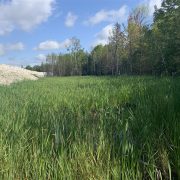Ecological restoration
Ecological restoration is an intentional action that initiates or accelerates the recovery of an ecosystem’s function, integrity and sustainability. Ecological restoration thus re-establishes the mechanisms for abiotic support of the biological components of the environment[1]. The success of an ecological restoration project is based on six essential steps:
- The definition of the problem: establish a diagnosis of the environment to be restored and understand the structural characteristics of the ecosystem to be restored as well as the context of the project;
- Identification of goals and objectives: select the desired ecological functions. They must be specific, measurable and achievable;
- Identify monitoring parameters: select indicators and targets to measure the success of the project, but also to learn for a future project;
- Developing plans and specifications: designing the project to achieve the established goals and objectives in an efficient and creative manner;
- Project execution: plan and execute the project in the right season, with the right people and equipment, and according to the plans, specifications and schedule;
- Follow-up of the work: agreeing to a follow-up over an extended period (a period of five years is desirable) allows us to gauge the success of the work carried out. Monitoring is also part of a continuous improvement process.
Ecological restoration poses many challenges, but can be very rewarding when results are achieved. Paradoxically, the fact that a functional ecological restoration project blends into its host environment and is invisible to the untrained eye is one of the best demonstrations of its success and its harmonious integration into the environment.
[1] Society for Ecological Restoration International, Science & Policy Working Group (2004). L’abcdaire sur l’écologie de la restauration de la SER internationale, version 2, 15 p.



